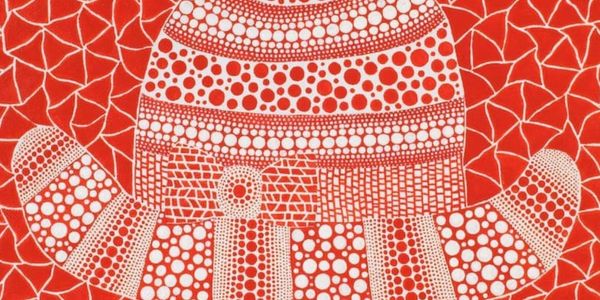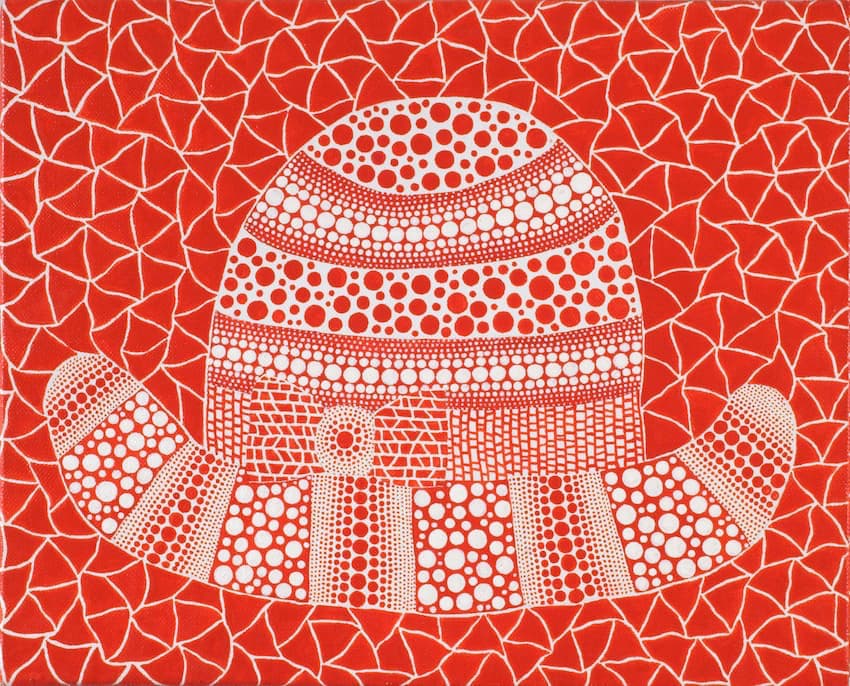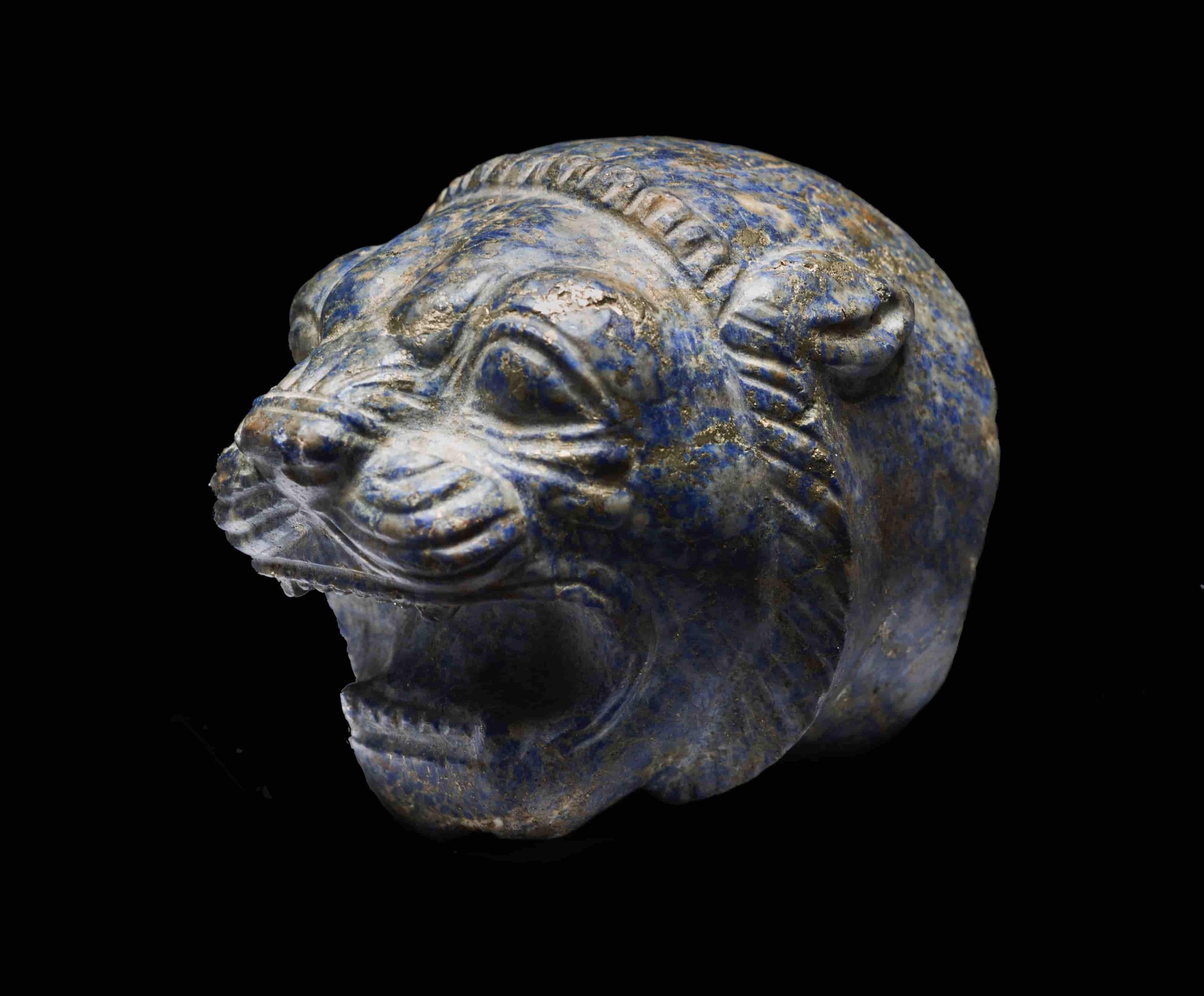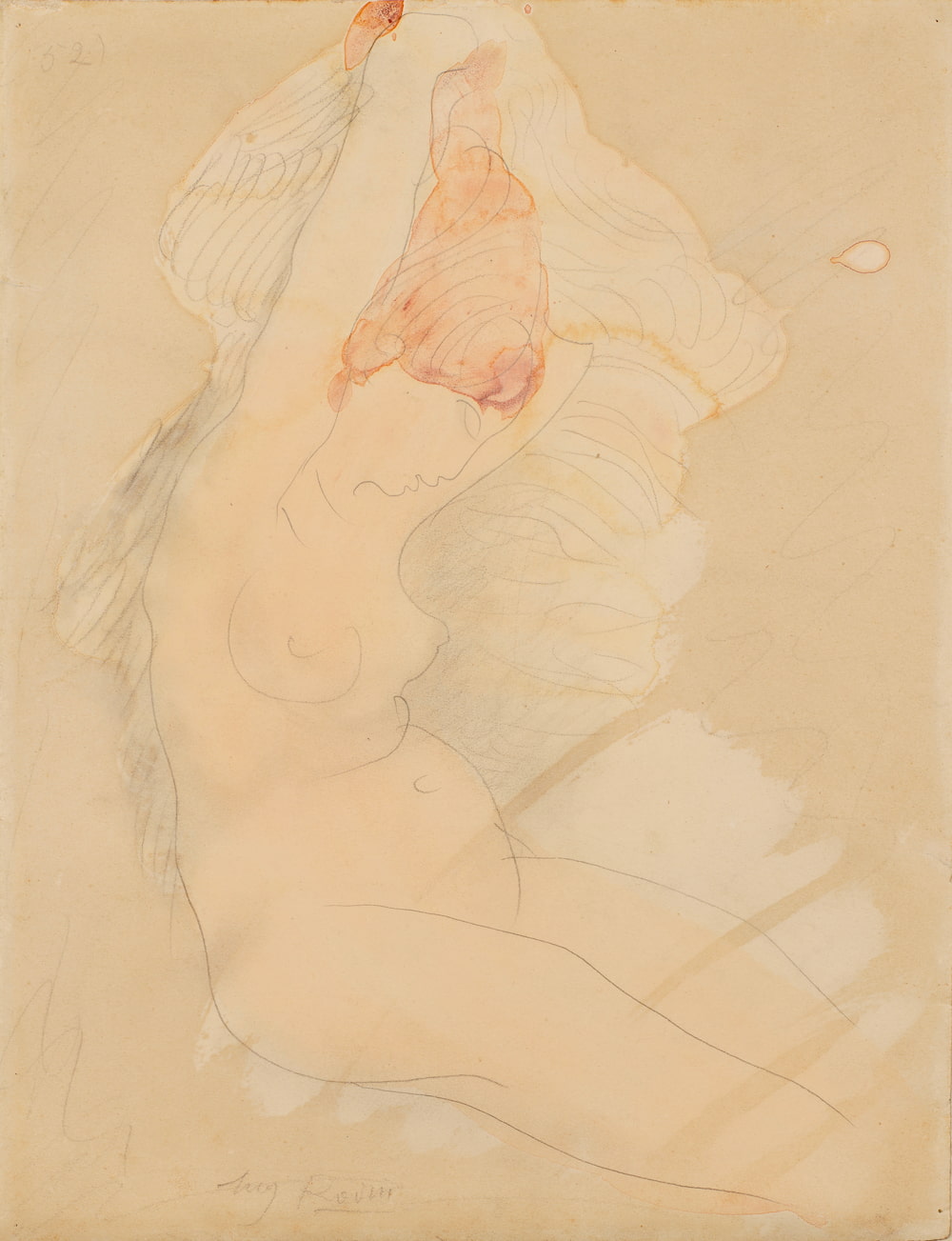Newsletter no. 3
Monday 10th July 2023

Each week discover the exhibitors of FAB PARIS 2023.
This week, discover a painting by Yayoi Kusama presented by the Galerie von Vertes, a lapis lazuli Achaemenid lion’s head chosen by the Galerie Kevorkian and a watercolour by Auguste Rodin proposed by the Galerie de Bayser.
Galerie von Vertes
Founded by Laszlo Vertes, the eponymous gallery was conceived as an international exhibition platform specialising in 20th- and 21st-century art. With a presence at international fairs and offices in Zurich and Freienbach, the gallery builds and manages private and public collections, organises exhibitions and gives lectures on art and art market related subjects.
“With Vertes I tried to create a democratic space for the exploration and understanding of the inexhaustible diversity of art and its creators.”
Laszlo Vertes opened his first gallery in Munich in 1981 and expanded to locations in St. Moritz and Salzburg before opening a Modern & Contemporary gallery in Zürich. The gallery annually participates in leading art fairs such as TEFAF Maastricht, Art Cologne, PAD London, Masterpiece and Art Miami. Vertes has also been involved as a lender in important exhibitions such as ‘The Steins Collect’ at the SFMOMA, Centre Pompidou and the Metropolitan Museum of Art. It also supported ‘Matisse und die Fauves’ at the Albertina in Vienna, ‘Von Matisse zum Blauen Reiter’ at the Kunsthaus Zurich and ‘Horizont Jawlensky’ at the Museum Wiesbaden. Over twenty-five years, Laszlo Vertes accompanied Swiss businessman Gérard J. Corboud in putting together a high-quality and varied collection of Impressionist, Post-Impressionist, Fauvist and German Expressionist pieces. It resulted in one of the most significant collections of Impressionist art in Europe. In March 2001, Gérard Corboud and his wife gave over 170 paintings from this collection to the Wallraf-Richartz Museum in Cologne as a permanent loan. Other collections looked after by Vertes include the Würth Collection in Germany, the Batliner Collection in Vienna (on permanent loan in the Albertina), the National Gallery in Washington and the Van Gogh Museum in Amsterdam. Exceptional pieces by Albers, Calder, Chamberlain, Ernst, Francis, Jawlensky, Kusama, Lichtenstein, Picasso, Poliakoff, Richter, Soulages, Vasarely, Warhol and Wesselmann are featured throughout the year in our online exhibitions.
Yayoi Kusama
1929 Matsumoto
Hat (ATE)
2001
Acrylic on canvas
8.7 × 10.7 in., 22 × 27,3 cm
Verso signed, dated and titled
Provenance:
– Private collection, Japan
· Mallet Japan, January 25, 2008, lot 92
· Opera Gallery, Geneva
· Private collection, Geneva
Expertise:
· Certificate of authenticity from the Yayoi Kusama Studio on 7 December 2007
Galerie Kevorkian
The Gallery, specializing in the arts of the Ancient East and of the Islamic Civilization, was founded in Paris, in the Hotel Drouot district, at the dawn of the 20th century, by Carnig Kevorkian and was later established at its current address on the left bank of the Seine, in 1923. The torch was taken up by his daughter Annie in 1963, then by his granddaughter Corinne since 2006.
The communicative passion, selective eye and unalterable commitment of these three generations of dealers and experts in the promotion of these arts, often relatively unknown to the general public, contributed to widening the circle of their amateurs and participated in the birth and growth of some of the finest private and institutional collections around the world in these fields.
Despite its small size, this sculpture of a roaring lion’s head is endowed with the expressive power of a monumental work.
Lapis lazuli, the material in which this head is carved, was considered a precious stone in the Ancient Near East, and was used along with precious metals such as gold, electrum or silver for the production of luxurious artworks. Primarily mined in the high mountains of Afghanistan, lapis lazuli appeared in the form of beads as early as the 6th millennium BC in Mesopotamia, and later in Mehrgarh in the Indus Valley (Pakistan) and Tepe Hissar in Iran. Thanks to commercial exchanges, it spread throughout the entire Eastern world, particularly around the 3rd millennium BC, during the early Sumerian dynasties and in the royal tombs of Ur, as well as in Bactria, Egypt, Syria, Anatolia, and the Iranian world.
Workshops, which worked in the service of palaces or temples, produced luxury objects, including furniture, architectural and jewelry ornaments, either carved in the round or inlaid with lapis. This stone, reserved for the elites, was an attribute of princes and gods. Endowed with supernatural power, it symbolized political and religious authority and remained an exceptional and precious material in Ancient Near Eastern art.
Achaemenid lapis lazuli lion’s head
Lapis Lazuli
Height: 4.2 cm; Length: 5 cm
Iran, Achaemenid dynasty, circa 5th century BC
Description:
Roaring lion’s head carved in the round. The beast’s mouth, agape and bordered by a delicate raised rib, reveals two rows of aligned fangs. Parallel folds frame its muzzle. Its bulging eyes are almond-shaped. The mane forms a circular collar incised with striations and interrupted by two ears, plastered back on each side of the head.
Provenance:
Former collection of Georges Gorse (1915-2002), French ambassador and former Minister Hôtel Drouot, Paris, October 24, 1989: lot number 3
Private French collection
Literature:
M. Casanova, Le lapis-lazuli, la pierre précieuse de l’Orient ancien, Dialogues d’Histoire ancienne, 27/2, 2001 : pp.149-188
Sept mille ans d’art en Iran, catalogue d’exposition, Petit Palais, Paris, octobre 1961-janvier 1962 : pl. XVIII, cat. 286, pl. LXX, cat. 633, pl. LXVIII, cat. 696
Trésors de l’ancien Iran, catalogue d’exposition, Musée Rath, Genève, 8 juin – 25 septembre 1966 : planche n. 63, cat. 667, p. 119
J. Curtis & N. Tallis, Forgotten Empire. The world of Ancient Persia, The British Museum Press, 2005: n°95 et 96, pp. 102-103
R. Ghirshman, Perse : Proto-Iraniens, Mèdes, Achéménides, Gallimard, 1963 : n°318, pp. 262-263
S. Wilfried, 7000 Jahre persische Kunst, Meiterwerke aus dem Iranischen Nationalmuseum in Teheran, Wilfried, Skira, 2001: cat. n°120, pp. 207-208
The art of the Achaemenians, Parthians and Sasanians, Reza Abbasi Cultural and Arts Centre, 1977
P. Amandry, Orfèvrerie achéménide, Antike Kunst, 1. Jahrg., H. 1., 1958 : pp. 9-23
Just like lapis lazuli, the lion in the Ancient Near East was both a symbol of power and authority and, like the blue color of the stone, this animal was endowed with a protective and apotropaic value.
Thus, from the Uruk period in the fourth millennium BC, it occupies – together with the bull – a prominent place in the animal iconography of the civilizations of this region.
In monumental art, it is found both among the Hittites in Anatolia and among the Assyrians and Babylonians in Mesopotamia, where it guards the entrance and strolls on the walls of palaces and of the temples linked to the cult of the goddess Ishtar. It is also the object of the royal hunts depicted in relief on the walls of Neo-Assyrian palaces.
But it was in Achaemenid Iran, where it became the splendid symbol of the Iranian royalty, that its representation reached its peak, both in architectural complexes where it adorns the capitals of the columns and the enameled bricks of the walls in Persepolis and in portable arts such as furniture, ceremonial weapons, luxury tableware and jewelry. The symbolic importance of the lion persisted in Iran well beyond antiquity, throughout the Islamic period and until modern times, to the point of appearing at the center of the national flag until 1979.
The number of surviving artworks from the Achaemenid period is quite limited.
Our leonine head, with its powerfully realistic expressiveness, is meant to inspire awe and to evoke the force of power.
Made of a rare and precious material, it is likely that it was a decorative element of furniture or, better still, the terminal of an imposing and sumptuous gold bracelet, as can be seen on a gold bracelet with lapis lion’s heads from the Cincinnati Art Museum, exhibited at the Petit Palais in Paris in 1961 and published by Helen J. Kantor in “Gold work and Ornaments from Iran,” Cincinnati Art Museum Bulletin, vol. 5, no. 2, October 1957, pp. 16-17.
Galerie de Bayser
Located on the first floor of a private mansion in the rue Sainte-Anne in Paris, the gallery has established itself as a reference for drawings both in France and on the international market.
The family structure, created in 1936, and developed by the parents Bruno and Thérèse de Bayser, is now managed by four brothers, Augustin, Louis, Matthieu and Patrick. Founding members of the Salon du Dessin, they have been participating for four years now in the development of Fine Arts Paris.
By exhibiting both drawings, paintings and sculptures, they try to create an intimate atmosphere on our stand that makes the visitor feel at home.
Auguste Rodin
(Paris 1840 – Meudon 1917)
Seated nude woman doing her hair
Watercolour gouache, black pencil
32.4×24.8 cm
Signed lower left “Aug.Rodin” and numbered “52” upper left
Provenance
Galerie d’Art Contemporain, Paris, bought in 1928 by Edwin R. Lavin.
Christie’s New York sale 17 May 1977, lot 104
Ortolani Collection
Exhibition
Brussels, Maison d’art, 1899
Rotterdam, Rotterdamsche Kunst-Kring; Amsterdam, Cercle d’Art “Arti et Amicitae” and The Hague, Haagsche Kunst-Kring, *Auguste Rodin*, May-November 1899
A drawing in pen and brown ink showing a young nude woman painting herself in the same seated position as in our watercolour is in the Musée Rodin (Inv. D.1228).
Christina Buley-Uribe has confirmed the work’s authenticity.
Newsletter
Stay informed of our news
by subscribing to the FAB PARIS newsletter





